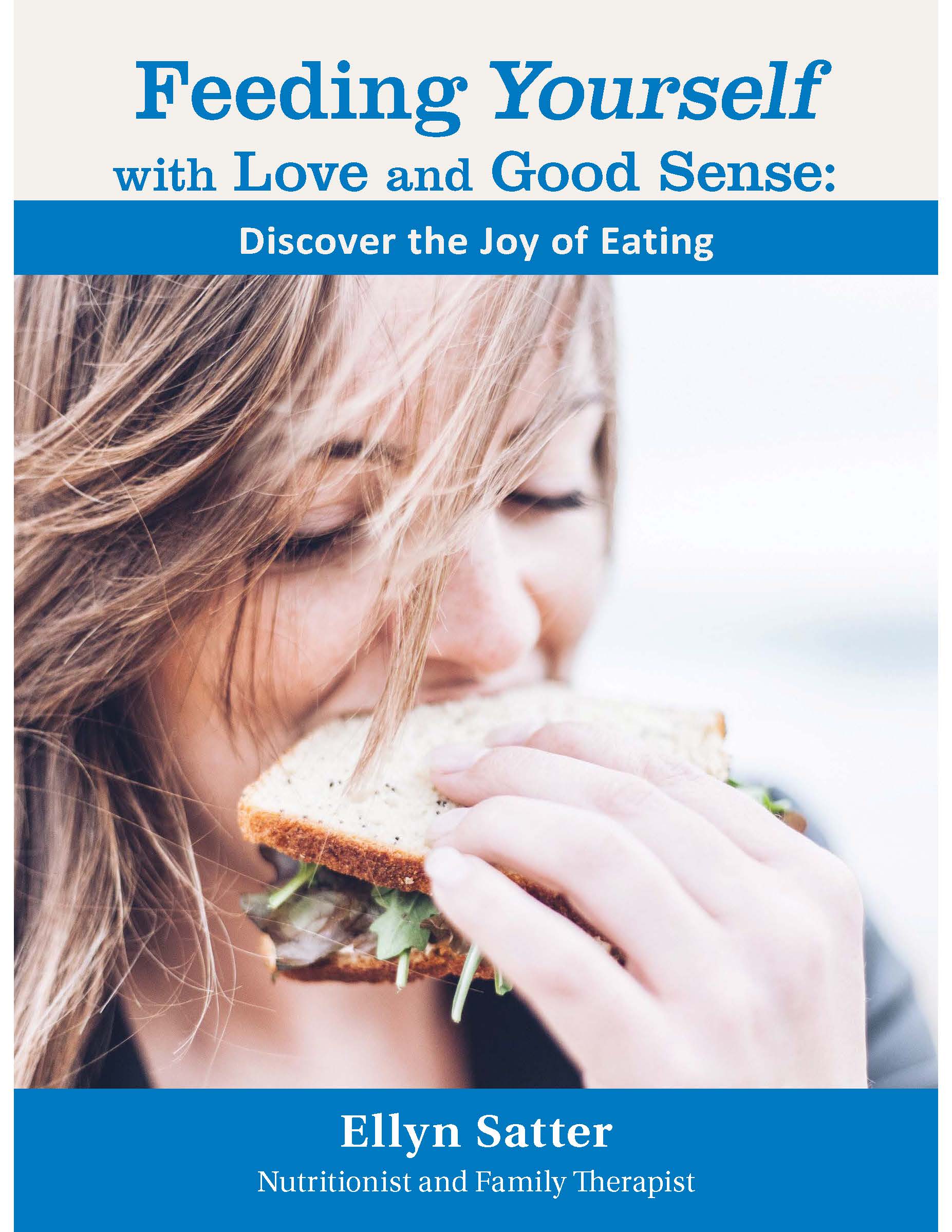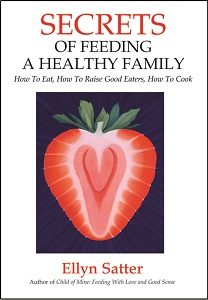

Family Meals Focus
The Ellyn Satter Institute Newsletter
Extreme Food Selectivity in Adults: How to Help
by Ellyn Satter, MS, MSSW, Family Therapist and Registered Dietitian
For a PDF of this article, click here
Everyone has food preferences, but some become handicapped with eating. They experience extreme conflict and anxiety about their limited food acceptance and are distressed by being presented with unfamiliar food. The American Psychiatric Association (APA) Diagnostic and Statistical Manual (DSM 5) medicalizes such extreme food selectivity as Avoidant Restrictive Food Intake Disorder (ARFID). Whether or not your patient qualifies for an ARFID diagnosis, from the Satter Eating Competence Model (ecSatter) perspective, suffering from extreme food selectivity has little to do with what the person does or doesn’t eat. Instead, it has everything to do with their feelings and attitudes about food and eating.
Working with extreme food selectivity draws on a solid knowledge of and practice with the Satter Eating Competence Model. Professionals trained in the Ellyn Satter Institute Treating the Dieting Casualty VISION workshop consider the history and context of extreme food selectivity by doing a complete workup: A detailed assessment of medical, nutritional, developmental, psychosocial, and eating-competence issues. This comprehensive assessment informs a several-session treatment plan based on the How to Eat intervention.
Consider attitudes and feelings
Extreme food selectivity is painful and life-limiting. Your patient is likely to experience considerable stress around food selection and eating, react strongly and negatively to certain smells and textures, feel that if they accept a food they have to eat it all, and be ashamed of their inability to eat from more than their short list of acceptable food. Their extreme food selectivity may limit their social life: They are not comfortable eating with others for fear that their inability to eat the available food will attract attention and even ridicule. Weight loss or nutritional deficiency can take them into the realm of ARFID, and marked interference with psychosocial functioning can indicate Other Specified Feeding or Eating Disorder (OSFED).
Rather than trying to get your patient to increase their number of acceptable foods, help them gain Eating Competence.
Consider Eating Competence, not increasing food variety
Eating Competent adults achieve nutrition and wellness goals by eating based on their positive and receptive eating attitudes and behaviors as described in the bullet list below. Rather than trying directly to get your selectively eating patient to increase their numbers of acceptable foods, help them to gain Eating Competence. That positive stance toward food and eating frees them to be comfortable with eating what they want and allows them to grow and develop food acceptance to the extent that they are able.
•They feel good about eating: They enjoy food and enjoy the times they get to eat.
•They can eat as much or as little as they need. Even if they eat a limited assortment of food, their sensations of hunger and fullness still effectively guide food regulation.
•They behave well at mealtime: They know the social niceties and can relax and enjoy being included.
•They can pick and choose from food that is available. They can tactfully ignore and defend themselves against unwanted food, get by with less-preferred food, and be prepared to quietly not eat if nothing appeals.
Consider history and context
Feeding goes well when parents are able to do their jobs with feeding and trust their child to do their jobs with eating. The same as all other children, your patient was born with the drive to eat and with positive feelings about eating. However, from the first they may not have eaten what or as much as their parents expected. They may have shown typically skeptical and erratic child eating behavior or they may have been particularly slow to warm up to new food. They may have been ill, have been especially sensitive to smell, texture, or taste, or their oral sensitivity and caution may have been exacerbated by neurodivergence.
Parents, in turn, likely reacted to the child’s slowness in accepting new food by putting pressure on feeding. Such reactions were perhaps exacerbated by the child’s real or perceived fragility and by counterproductive advice from others.
The child reacted to the feeding pressure and their natural inclinations to eat were impaired. Shame enters: The child who can’t do and be what the parent wants feels ashamed, not angry with their parents. As they grow up, outside pressure on eating morphs into inside pressure: The person suffering from extreme food selectivity does to themselves what adults did to them: They pressure themselves to eat and shame themselves for not eating.
Treat the feelings and attitudes; don’t try to get them to eat
Because adult picky eaters are so self-critical about eating their few familiar foods, they often “eat without eating.” They may eat only when hunger drives them to it and then distract themselves by reading or watching TV. As a consequence, the first step in treatment is to help them resolve their conflict and anxiety about eating. Teach them to make time to eat and use permission/awareness self-talk: “It’s all right to eat this. I just have to pay attention.”
After that, they can learn social skills for eating with others. It is okay to pick and choose from what is on the table, to decline to be served, to take moderate portions, to eat only one or two food items, to leave unwanted food on the plate, and to take more of one food without finishing another. It is not okay to draw attention to food refusal, criticize food, ask for food that is not on the menu, or to take a lot of food and then not eat it.
Increasing food variety will come last if it comes at all. Does your patient want to eat new food, or do they want to want to? They might ever-so-gradually learn to eat new food—or they might not. In either case, they do not have to be miserable about their eating.
The continuum of food selectivity
Not every food-selective adult requires the detailed assessment and treatment described in this article. Some are simply picky and can often bring themselves along after a single session with you. They can work on their own by applying the step-by-step guidelines in Feeding Yourself with Love and Good Sense. You can tell after a few weeks or months if they are progressing toward eating with comfort and joy. If not, you can recommend the treatment described here.
Explore

Step-by-step guidance for becoming Eating Competent
Being Eating Competent works. Patty stopped being ashamed that she ate only a few foods. Instead of criticizing herself for eating from a short list, she learned to say to herself, “It’s all right to eat this, I just have to pay attention.” When others criticized her for eating so few foods, Patty found the courage to ask, “Why would you make an issue of what I eat?” Once she got the pressure off herself, Patty likely learned to eat a few more foods. But maybe she didn’t. That’s not the point. Even people who struggle with weight, have trouble eating “healthy,” or are challenged by diabetes or food allergies do not have to be tied to lists of food.
Ellyn Satter’s Secrets of Feeding a Healthy Family says the secret of raising a healthy eater is to love good food, enjoy eating, and share that love and enjoyment with your child. When the joy goes out of eating, nutrition suffers.

